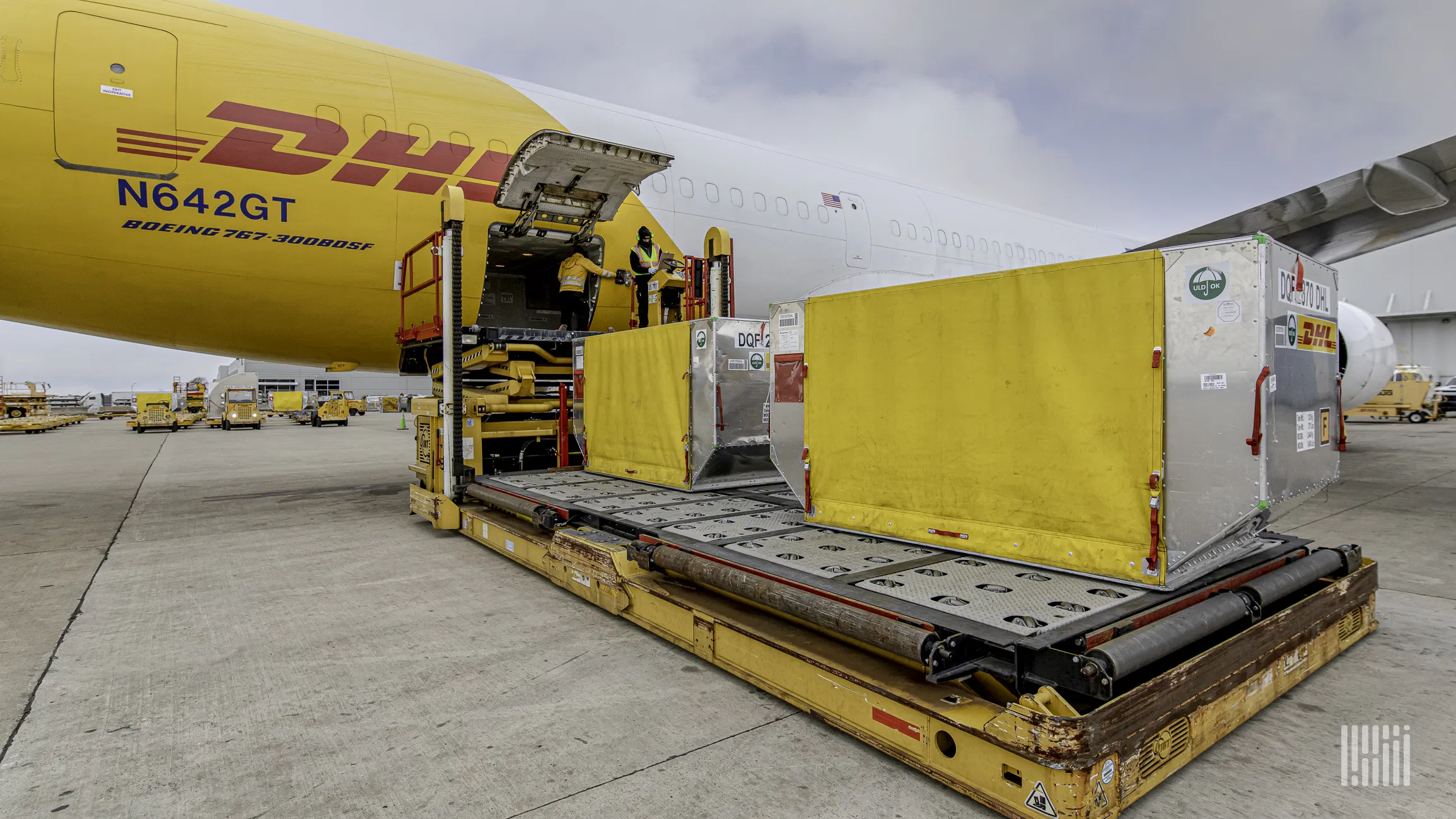
DHL Express strengthens air cargo infrastructure at Bengaluru Airport
BENGALURU : Amid intensifying competition for regional airfreight capacity and expanding trade volumes across South Asia, DHL Express has reinforced its commitment to the Indian market with a significant expansion of its logistics infrastructure at Kempegowda International Airport (BLR), Bengaluru. Announced on 27 June 2025, the development includes a new 17,900 sq ft automated service centre at the AISATS Bengaluru Logistics Park, raising DHL’s total operational footprint at the airport to over 130,000 sq ft. The €3.43 million investment forms part of DHL’s Strategy 2030 and signals the company’s alignment with India’s broader policy drive for logistics modernisation and trade facilitation.
The timing of this infrastructure upgrade is notable. As India seeks to scale air cargo volumes beyond 10 million metric tonnes annually by 2030, the expansion of dedicated handling capacity and automation capabilities becomes increasingly urgent. Bengaluru—widely recognised as a technology and manufacturing hub—is emerging as a key export origin, with Kempegowda Airport recording a 7.3 percent year-on-year growth in cargo volumes in FY 2024, according to the Airports Authority of India.
Growth through infrastructure and policy alignment
The new DHL facility integrates automation-driven solutions such as telescopic conveyors, wheel sorters, and sequence-based logic for optimised workflows. These tools are designed to reduce processing time, minimise manual labour, and increase shipment throughput—factors that are now fundamental to competitive performance in airfreight.
R.S. Subramanian, senior vice president, South Asia, DHL Express, commented that, “With closer proximity to the airport and cutting-edge automation, we can process shipments faster while reducing manual effort. The Bangalore expansion enhances regional productivity, placing us in a stronger position to manage future volume growth with greater agility.”
The strategic focus extends beyond facility capacity. DHL’s infrastructure investment is directly aligned with India’s National Logistics Policy (NLP) and the PM Gati Shakti initiative, both of which prioritise multimodal integration and cost-efficiency. The company’s expansion supports government objectives to reduce logistics costs—currently estimated at 13–14 percent of GDP—to the international benchmark range of 8–9 percent.
Trade facilitation priorities
The Bengaluru expansion responds to increased demand from SMEs and multinational exporters in high-value sectors such as electronics, pharmaceuticals, and automotive components. These sectors increasingly rely on airfreight to maintain supply chain resilience and time-definite delivery standards. DHL’s positioning at BLR thus contributes to trade corridor resilience, especially as nearshoring and China+1 sourcing strategies gain momentum.
According to the DHL Trade Atlas 2025, India is projected to account for 6 percent of global trade growth over the next five years. In this context, Bengaluru’s role in outbound trade flows is set to expand further, placing heightened pressure on cargo infrastructure to deliver faster processing and consistent regulatory compliance.
Efficiency and multimodal connectivity
One of the new facility’s distinguishing features is its integration of landside and airside functions, including dedicated drive-in bays for DHL’s pick-up and delivery vehicles. This design supports faster turnaround times and aligns with evolving requirements in time-sensitive logistics.
Such infrastructure upgrades are critical for ensuring the operational efficiency of hub airports, particularly during peak export cycles. IATA’s 2025 Annual Review noted that airport automation and layout optimisation contributed to a 12 percent reduction in average shipment dwell time across global air cargo gateways.
Strategic sustainability considerations
While DHL’s announcement did not detail specific environmental metrics, the infrastructure is consistent with the company’s Strategy 2030 goals to reduce carbon emissions and improve operational sustainability. Automation reduces reliance on manual processes and vehicle idling, which are key contributors to ground-level emissions.
The facility’s proximity to airside operations may also reduce transit times and support DHL’s compliance with environmental mandates such as the ICAO CORSIA programme and the EU’s Emissions Trading System (ETS). As sustainability performance becomes increasingly integrated into airfreight procurement and insurance frameworks, such compliance-ready facilities will offer competitive advantages.
Implications for regional stakeholders
The expansion of DHL Express’s infrastructure at Bengaluru Airport carries notable implications for regional air cargo stakeholders, particularly freight forwarders, third-party logistics providers (3PLs), and manufacturers across South India. By strengthening access to international express services, the new facility is expected to reduce processing delays and bolster infrastructure support for time-sensitive exports—especially in high-value sectors such as electronics, pharmaceuticals, and perishables.
The upgraded hub offers scalable capacity to accommodate future trade surges, whether driven by seasonal demand or shifts in global sourcing patterns. Moreover, enhanced automation and closer proximity to the airport contribute to greater reliability and improved service-level agreement (SLA) compliance across multimodal routes.
Strategically, DHL’s investment also elevates competitive expectations in the regional logistics market, placing pressure on other global integrators and cargo carriers to match both the efficiency and technological sophistication of this new model.
Positioning India
Ken Lee, CEO of DHL Express Asia Pacific, stated that, “The sustained economic dynamism across Asia Pacific, particularly the robust trade growth witnessed in India, continues to be a cornerstone of global commerce. Strengthening our operations in Bangalore is a response to this momentum.”
The integration of this service centre into DHL’s global network reinforces India’s role in transcontinental supply chains. With growing interest in cross-border e-commerce and demand for predictive analytics, the logistics sector’s ability to offer faster, data-integrated, and climate-compliant services is now a fundamental expectation.
Network efficiency must converge
DHL’s facility at Bengaluru Airport marks more than an infrastructure expansion—it reflects a convergence of trade policy, private capital, and supply chain innovation. For India to cement its position as a global air logistics node, such investments must be coupled with harmonised customs processes, airspace access frameworks, and skilled workforce availability.
As the air cargo industry pivots towards digital, resilient, and decarbonised operations, facilities like DHL’s new service centre in Bengaluru offer a replicable model for future-ready logistics infrastructure across emerging markets. For stakeholders in air transport and trade policy, the investment presents a timely benchmark in balancing operational efficiency with strategic foresight.
